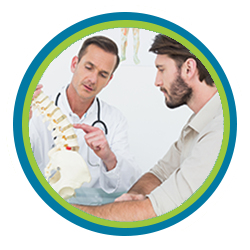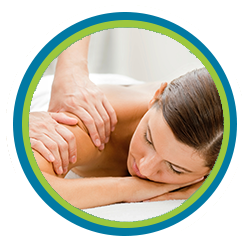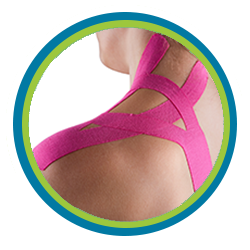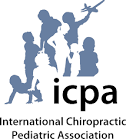Weight Loss, Bad Habits and Addictions
"The following article was written for Chiropractors in layman's terms and was recently published in The American Chiropractor Magazine. As one of the global mentors guiding other doctors in the application of the Koren Specific Technique (KST), I have had personal clinical experience with correcting the physical/emotional subluxations noted in this article."
Dr. Daniel P. Secrest, DC chiropractic physician.
Can you give an adjustment for weight loss, bad habits and addictions?
By Tedd Koren, DC
Can you give a physical adjustment to help someone lose weight, curb a bad habit, get rid of addictions or otherwise change thought patterns?
At first blush that may sound bizarre, or at least illogical. How could something done to the physical body affect one's mental/emotional state? The answer is that it is impossible to do something to the physical body that does not affect the mental/emotional state. You cannot separate the mind from the body.
Over the past few decades this aspect of physiology has been explored by the science of psycho-neuro-immunology (PNI) (aka psychobiology). PNI reveals that our every thought, memory, feeling and habit has a physical - including postural - correlation.
For example, when a person is scared or shocked and enters into a fight or flight reaction we know that that reaction is mediated by many chemical pathways. But why couldn't the person react structurally as well. Just as the person has chemical correlations to stress so they have physical correlations to stress.
Clinically body workers of all kinds, including chiropractors have used this fact to help people reduce their stress, especially as it relates to specific experiences.
From a chiropractic perspective we can adjust the body part that correlates to the mind/emotion and the stress linking the two will be reduced, freeing energy for healing.
Scott Walker. DC developer of Neuro-emotional technique (NET) discovered this phenomenon and called the unhealthy relationship between physical and emotional health the neuro-emotional complex (NEC).
How can we use this information?
Subluxations are posture specific. Just as a person may feel fine in one posture and in pain inother, u can put people in the physical or emotional posture of subluxation (POS) and find subluxations that would not otherwise be discovered. How is this done?
It is done by simply asking the patient to assume the physical posture of their subluxation. Usually that's a position of pain or dysfunction or the position they were subluxated in. However you can also assume an emotional POS. Both work equally well. We have found that we're only limited by the questions we ask. So with that in mind..
One day, Steve.
One day Steve Polenz, DC wrote this on the KST forum:
"I finished adjusting a woman and she asked me, "what does my body say to help me lose weight?' So I asked her body if there was a weight loss pattern for her. I got a yes (OD) so, of course I adjusted. A week later she reported that her "weird" food cravings were gone and she had lost 4 lbs.
I asked the same type of question for a person who loves red wine but cannot sleep at night if she has a single glass. I adjusted her accordingly and she has been able to have red wine ever since."
Dr Polenz' post got a lot of attention and other KST doctors started trying it out. Dr. Kevin Kita wrote shortly thereafter:
"I have experimented with KST for addictions. The people I do these adjustments on are totally freaked out, because their habits do change. For example one female patient lost 30 lbs., another lost 21 lbs. Another quit her chocolate, sugar and diet coke addiction. The weight loss adjustment doesn't seem to increase metabolism, but changes the eating habits."
Gabrielle Friedman, DC:
"I have had two women stop eating sweets. One has completely stopped eating white carbs and chocolate and has lost 4 lbs. in a week. She said she is not consciously making these decisions; she just doesn't go for it anymore."
Dan Schumacher, DC:
"I gave my first weight loss adjustment. The patient says that when she is not hungry and tries to eat, the food would taste bad, so she would not eat. Also she would be full faster when eating less. Pretty cool!
From a patient:
"On any given day I'd consume 3 or 4 cans of soda at night plus a large soda for lunch. This habit lasted for years. I was a little skeptical but the treatment worked. I haven't had a desire for soda for 5 weeks. I feel great!" T.C.
How the adjustment works
The process of asking a patient's body questions has been a part of nearly all healings arts since time immemorial. Healers have been using this technique either consciously or unconsciously.
Chiropractors consciously do this when they use yes/no devices: leg checks, applied kinesiology (AK), the O-Ring, Toftness, and other devices as a way of accessing the body's information; KST practitioners use the occipital drop (OD).
WE can use this to personalize or individualize our care to the specific needs of the patient. However some general patterns have emerged that may work on most people and this is what we'll deal with.
Here is one way many KST doctors have done it. Since we're going to simplify this for people who are doing any technique let's assume the patient has consciously given his/her assent to have a weight loss, bad habits or smoking adjustment done on them.
First, have the patient think about…..
This part is optional but can improve the effectiveness of the work. First ask the patient to think of their bad habit - what they love to eat or drink? Have them picture themselves eating and drinking it. But do more than that; have them "feel" their craving for this food or drink.
While they are feeling it, (they will be in the emotional POS) do the adjustments. You might like to use your hands (ie thumb toggle), a hand held instrument (i.e. ActivatorT) or an electrical instrument (i.e. ArthrostimT). I find that the ArthrostimT is the easiest, most comfortable and most reliable instrument to use.
Next adjust.
(Optional) The first adjustment can be to the top of the head (along the sagittal suture). Then adjust the left and right temporal bones from posterior to anterior.
Next gently adjust the four sub-occipital fibers in the direction inferior to superior. Two are on either side of the skull. They are usually a little sensitive if you press on them. You can palpate your own head to find them. One is just behind your mastoid the other is slightly off-center of the back of the skull, under the occiput.
Then adjust the T-1/T-2 area, usually right to left.
Why those parts?
The mechanisms of action are not known but there are some indications why these adjustments work so well. The temporals lay over the insular cortex, an ancient section of the brain that seems to affect habits. Clinicians have observed cessation of smoking, dietary changes and other various personality changes after insular cortex stroke or trauma damage.
The top of the head and the T-1/T-2 area contain acupuncture points where all the yang points coincide. These points are called "The cure of 100 diseases." The sub-occipital fibers are near acupuncture points that affect brain nourishment.
However the proof is in the eating (and in this case, the adjusting). Why not try these adjustments? It's a quick and dirty way to do KST, but often works very well.
Tedd Koren, DC is the developer of Koren Specific Technique, a complete system of locating and correcting physical, emotional and energetic subluxations. KST is a breakthrough in chiropractic philosophy, art and science. Dr. Koren may be contacted at
www.korenspecifictechnique.com or call 800-537-3001
My Personal Invitation:
"If you live in the Scottsdale, Tempe, Mesa, Chandler, Phoenix, Paradise Valley, Fountain Hills or another surrounding area and have one of the problems noted in the above article, contact me at 480-994-4411 for a free consultation, without obligation. I want to be your chiropractor."
Dr. Daniel P. Secrest, DC Chiropractic Physician





